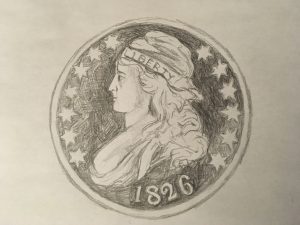by Michael Liss
 I have a problem. Each December I write a political New Year’s ditty to send to friends and family. I’ve had a good time with them, even when the news (at least from my perspective) is less than cheery. I get to crib shamelessly from great authors of the past, ruin perfectly good metre with my tuneless ear, and throw in some real groaners. My “Mitchie at the Bat” is considered a classic of the genre, and even last year’s dirge-y “Wreck of the Hillary C” induced a small avalanche of comments from the similarly agonized.
I have a problem. Each December I write a political New Year’s ditty to send to friends and family. I’ve had a good time with them, even when the news (at least from my perspective) is less than cheery. I get to crib shamelessly from great authors of the past, ruin perfectly good metre with my tuneless ear, and throw in some real groaners. My “Mitchie at the Bat” is considered a classic of the genre, and even last year’s dirge-y “Wreck of the Hillary C” induced a small avalanche of comments from the similarly agonized.
But I’m blocked. Eleven months of government by cattle-prod has depleted my mirth supply, so, in a last-minute Hail Mary, I am going to recharge by pivoting to a dispassionate discourse about something we are all passionate about—money. Not Bitcoin, or something esoteric that’s way above my humble understanding, but plain old cash—the real stuff, actual specie, as in old coins.
I happen to have a few. Not many, and they don’t have much in the way of numismatic value, but they are a treasure trove of history, and history cheers me up. About a dozen assorted coins dating from the late 18th Century to 1892, all from a worn-out purse my grandmother found in her basement catacombs. Among them were some two-cent pieces from the 1860s, a half-dime, an 1803 large penny, a commemorative coin from the Columbian Exposition, and an absolutely exquisite 1826 Capped Bust half-dollar.
To a junkie like me (for history, not necessarily for coins) they are all wonderful. Collectively, they tell a story that starts with 16 states and ends with 44, of powdered wigs and multi-hour speechifying, several wars, horses and stagecoaches, cotton pickers and cotton merchants, the creation of whole new cities out of swamp, and the building of an empire (by whatever means necessary) that stretched across the continent.

